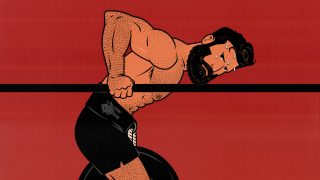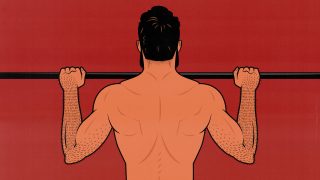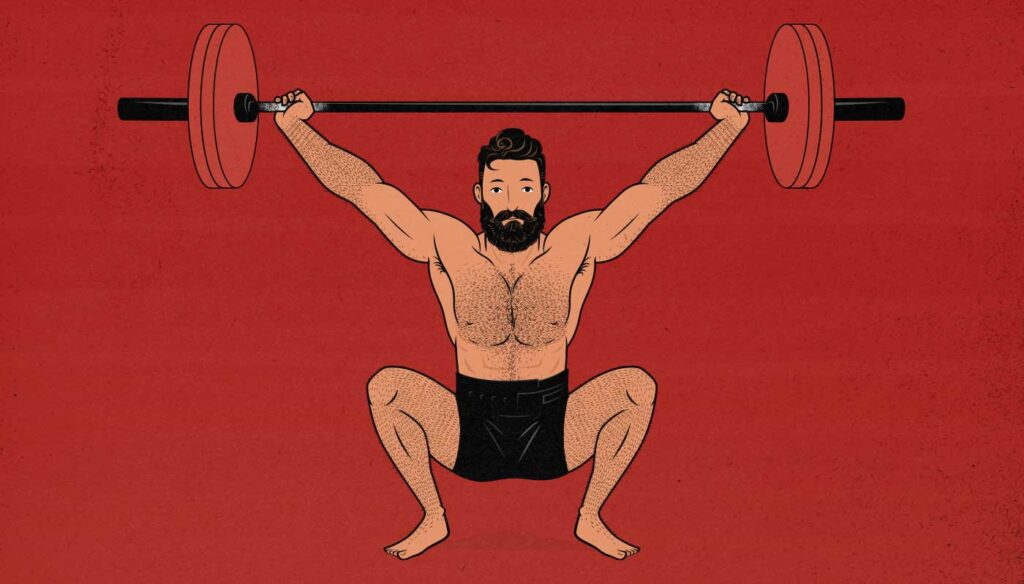
Is Olympic Weightlifting Good for Gaining Muscle Size?
Is Olympic weightlifting good for building muscle? It depends on what we compare it against. Any type of training that challenges our muscles with heavy loads has the potential to stimulate at least a little bit of muscle growth. That makes it quite a bit better than endurance training and cardio for building muscle. But does Olympic weightlifting stimulate a comparable amount of muscle growth to hypertrophy training (aka bodybuilding)?
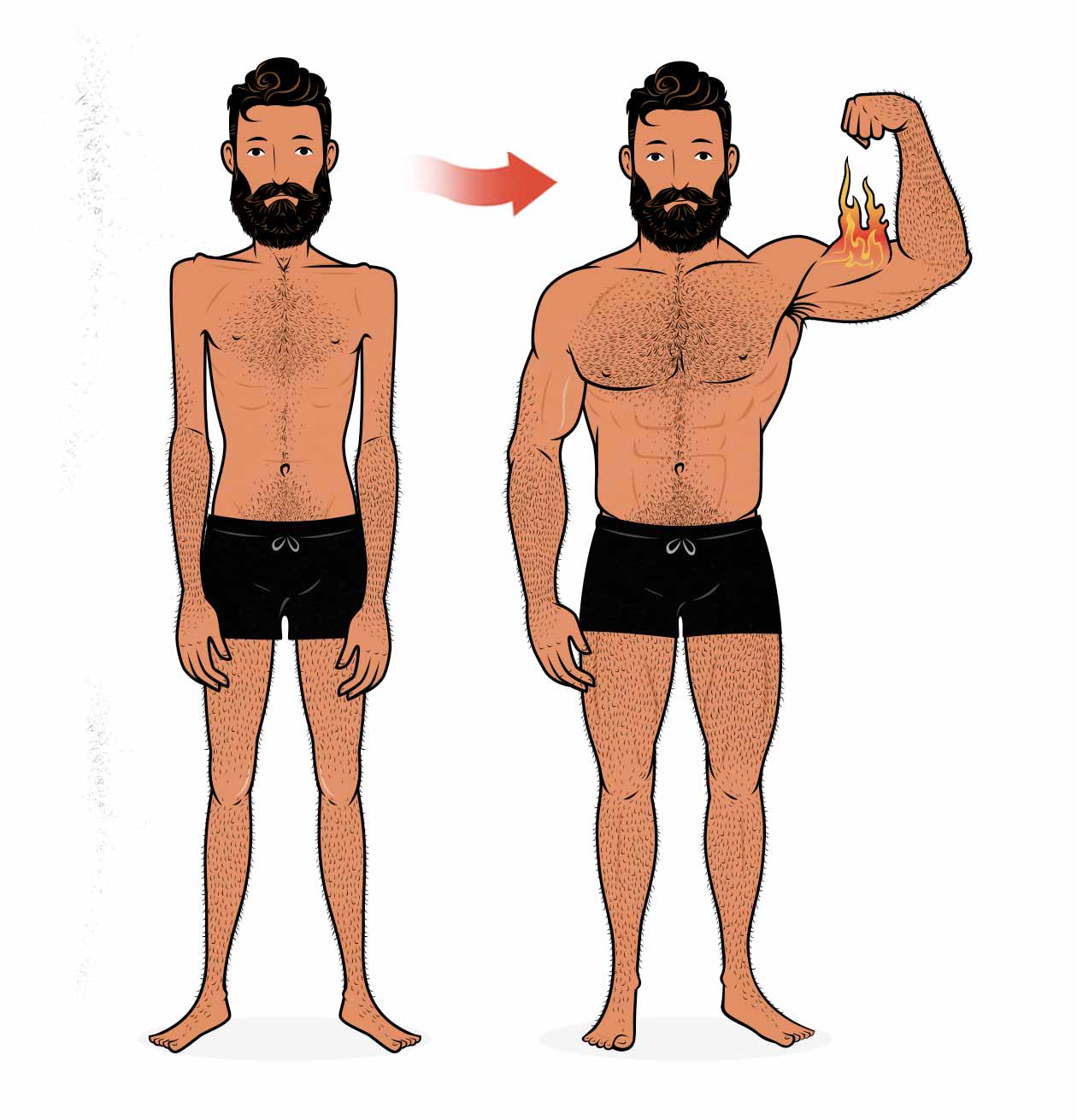
Introduction
Olympic weightlifting is an Olympic sport designed to measure power. This can be contrasted against strongman, which tests general strength, powerlifting, which tests maximal strength, and bodybuilding, which judges muscle size and aesthetics.
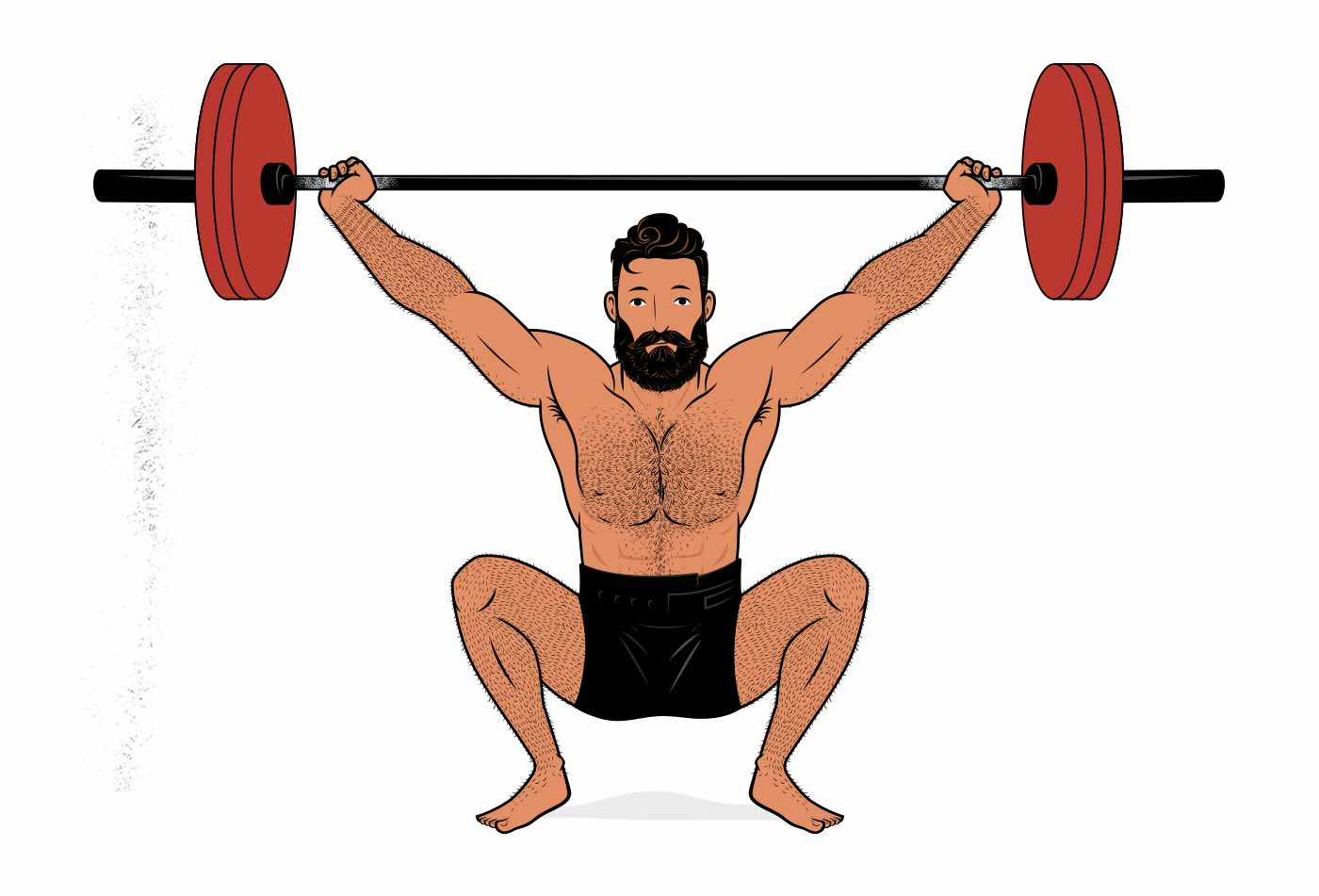
If we zoom out from the Olympic sport, we’re left with just “weightlifting,” which is a form of power training that’s commonly used by athletes to increase their explosive power. This can be confusing because “weightlifting” sounds quite a lot like “lifting weights” or “weight training.” But weightlifting specifically refers to power training. For instance, an athlete might use deadlifts to gain muscle size (hypertrophy training), then train power cleans to make those muscles more explosive (weightlifting). It’s one of several aspects of sports training.
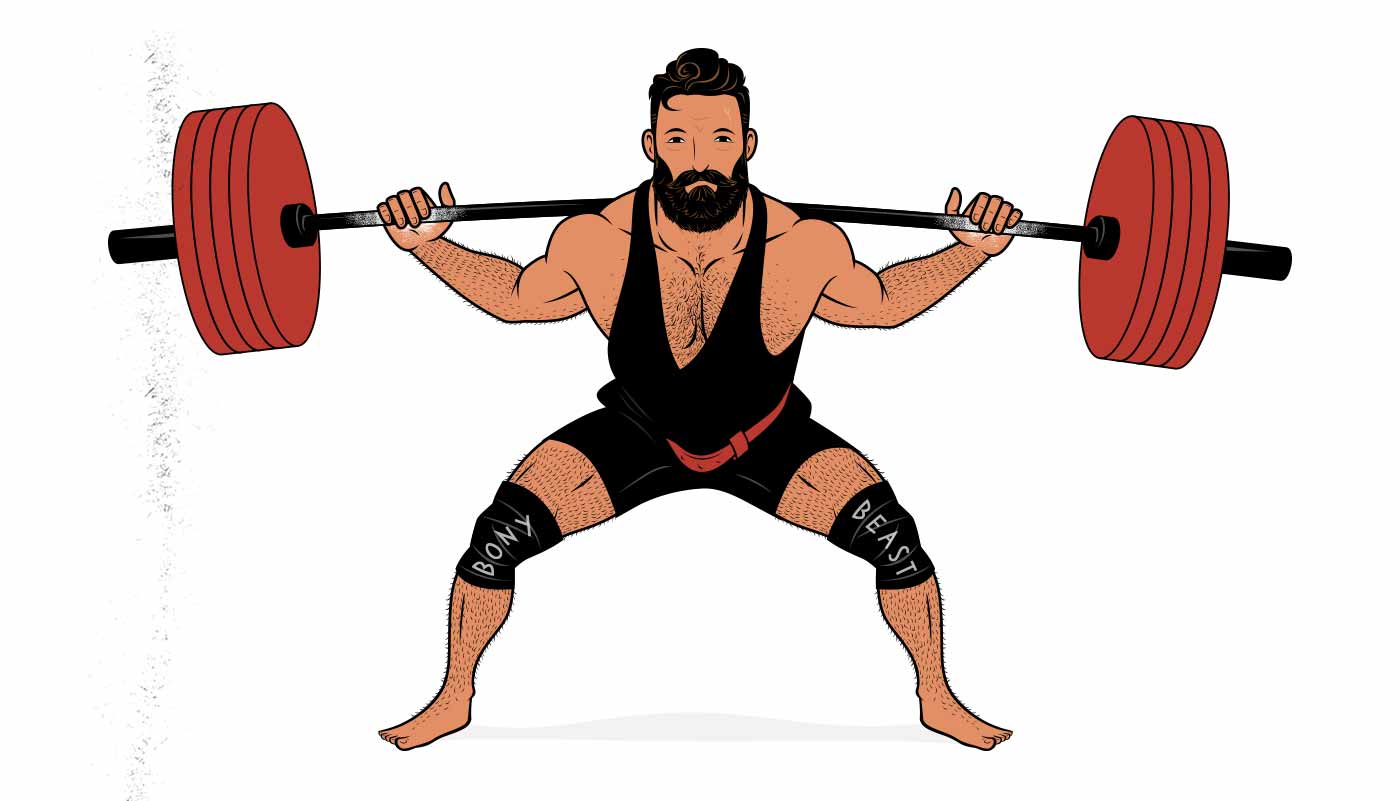
Figuring out if Olympic weightlifting is good for building muscle is a little bit tricky. It’s not designed to stimulate muscle growth, people don’t use it to stimulate muscle growth, and so nobody is researching whether it stimulates muscle growth. As you might imagine, it’s probably not very good for gaining muscle size, but since it hasn’t been studied directly, it’s hard to say exactly how much worse it is. It’s just assumed that power training is designed to improve our power, whereas hypertrophy training is designed to stimulate muscle growth.
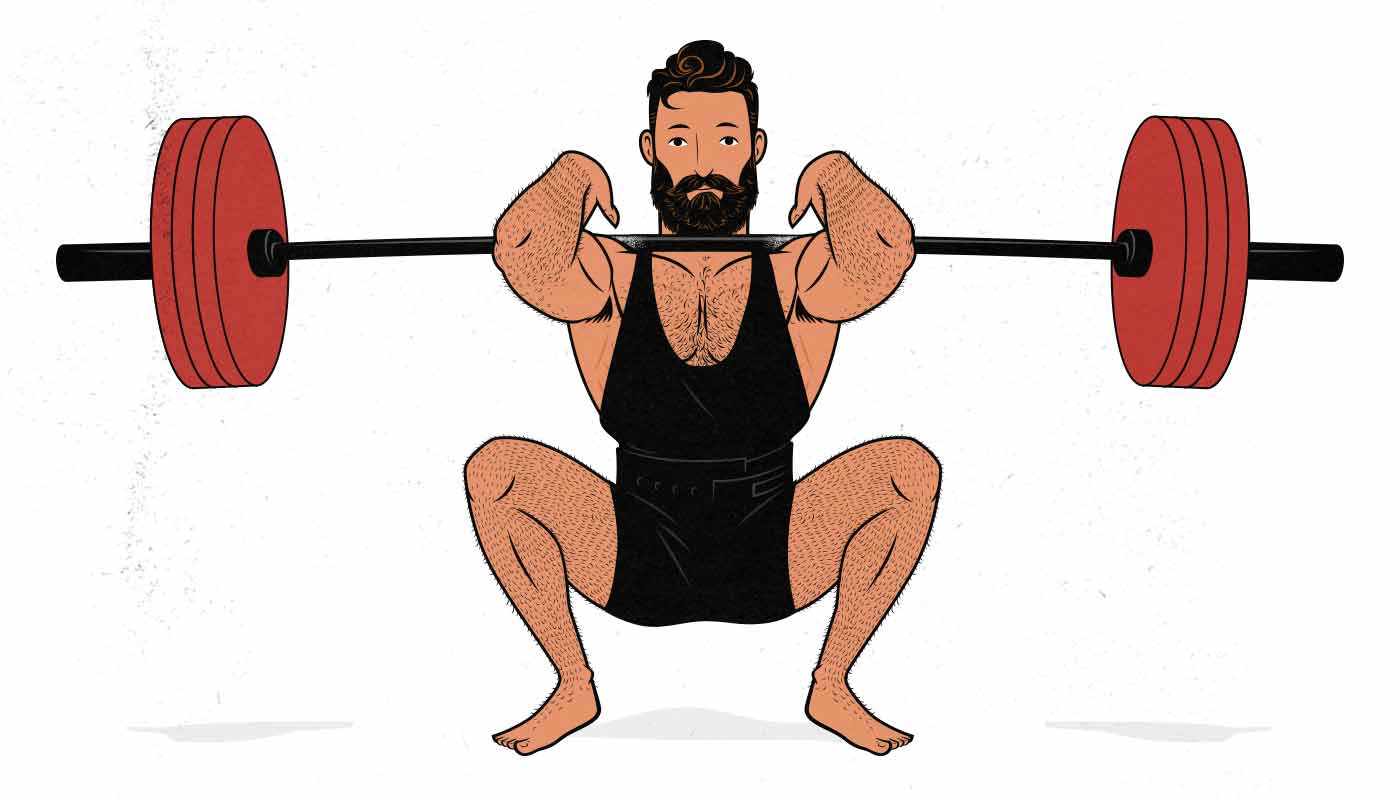
In fact, even Olympic athletes use hypertrophy training to build muscle. The power training is used to develop power, the hypertrophy training to gain muscle size. They’ll do snatches, cleans, hang cleans, and jerks to develop power, yes, but when they want to build bigger muscles, they’ll switch to doing traditional hypertrophy lifts, such as front squats and snatch-grip deadlifts. As a result, we can’t even attribute the muscles that Olympic weightlifters have to their weightlifting.
However, we do know which factors stimulate muscle growth. There’s been good a lot of research looking into hypertrophy training. It’s not perfect, but we can judge power training by the same criteria that hypertrophy training is judged to see if we’d expect it to be good for stimulating muscle growth.
Is Olympic Weightlifting Good for Building Muscle?
The short answer is no, it isn’t. There are a few reasons why Olympic weightlifting isn’t very good at stimulating muscle growth:
- The rep ranges are too low: in traditional Olympic weightlifting, only a few reps are done per set. That means less mechanical tension per set, and thus less muscle growth being stimulated with each set (systematic review).
- The training volume is too low: power training works best when we’re feeling fresh and can exert a lot of force, meaning that the programs tend to be fairly low-volume, with more emphasis placed on recovery than on stimulating muscle growth. We build muscle faster with higher training volumes (meta-analysis).
- The time under tension is too low: Olympic weightlifting is done by exploding the weight off the floor, which involves an intense but brief muscle contraction. Muscles grow better if we keep tension on them throughout our sets, creating a hypoxic state and then flooding our muscles with local growth factors when the blood rushes back in, increasing muscle growth (study).
- The injury rate is somewhat high: if we look at research comparing the injury rates between Olympic weightlifting and bodybuilding, we see that Olympic weightlifting results in around 2.6–3 injuries per thousand hours, whereas bodybuilding results in 0.2–1 (source). So the injury rate is around 3–10x higher. Mind you, Olympic weightlifting is still safer than running.
- The lift selection isn’t very good: Olympic weightlifting is built around just a few lifts: the snatch, clean and jerk, power clean, hang clean, and so on. All of these lifts emphasize the quads and glutes. If we’re trying to gain muscle size, though, we want to stimulate muscle growth in all of our muscles. And if we want to look muscular, we need to train our upper-body muscles with the same fervour as we train our lower-body muscles. For that, we recommend building hypertrophy training routines around the Big Five Hypertrophy Lifts.

We would stimulate more muscle growth by lifting heavier weights, lifting through a larger range of motion, and keeping tension on our muscles as we lower the weight back down. As a result, Olympic weightlifting isn’t used to build muscle, it’s used to make the muscles we already have more explosive. When Olympic weightlifters are trying to gain muscle size, they usually choose lifts that are designed to bulk up their quads and glutes, such as front squats, snatch-grip deadlifts, and Romanian deadlifts.
Is CrossFit Good for Building Muscle?
One of the reasons that Olympic weightlifting is becoming popular again is because of the surging popularity of CrossFit. But CrossFit uses the Olympic weightlifting lifts in a novel way: with higher rep ranges, higher volumes, shorter rest periods, going close to failure, and with extra exercises (such as kipping pull-ups). This makes CrossFit a blend between a bodybuilding program, a general fitness program, and Olympic weightlifting. As the name implies, it’s a style of training designed to cause several types of adaptations at once.
However, there are still some problems with using CrossFit to gain muscle size:
- The time under tension is still quite low. The emphasis is on exploding out of the bottom of the lift, using momentum, and dropping the weight back down. That’s not a good lifting tempo for building muscle. We can build muscle much faster by lifting more methodically, keeping constant tension on our muscles throughout our sets.
- Our fitness is often the limiting factor. One of the bigger problems with CrossFit is that the emphasis is on improving our fitness, not our muscle size and strength. As a result, the rest times tend to be short. Sometimes they’re so short that our cardiovascular systems limit us before our muscles do, at which point we fail to stimulate any muscle growth.
- The lifts aren’t chosen for muscle growth. As with Olympic weightlifting, the lifts in a CrossFit routine aren’t chosen to stimulate muscle growth. Some muscles aren’t trained at all, others aren’t trained enough, and none are trained optimally.
- CrossFit workouts aren’t programmed for muscle growth. Instead of the workouts being designed to stimulate muscle growth, they’re primarily designed to improve our power and fitness.
So, as with Olympic weightlifting in general, CrossFit isn’t ideal for gaining muscle size. If that’s your main goal, you’d be better off doing hypertrophy training.
What Is Olympic Weightlifting For?
There are a few reasons why people practice Olympic weightlifting, most of them relating to improving sports performance:
- Weightlifting is an Olympic sport, and so training the Olympic lifts is crucial for anyone who wants to excel at the sport.
- It’s great for improving our explosiveness. It does this by increasing our nervous system’s ability to recruit all of our motor units at once for a single all-out burst of force. All power training does this, but the Olympic lifts are the most popular power lifts (and with good reason).
- It’s great for improving our coordination and athleticism. Most weight training—including hypertrophy training—is good for improving our coordination and general strength, but Olympic weightlifting is especially good for people who play sports that require lower-body speed and explosiveness.
- It can be good for improving our general fitness, especially when done in higher rep ranges and with shorter rest times, as CrossFit does. CrossFit may not be ideal for stimulating muscle growth, but it’s quite effective for improving our general fitness.
- It’s good for improving our bone density. Olympic weightlifting involves throwing weights up and then catching them, with the impact crashing through our bones. This is great for improving our bone density and overall toughness, which may have good carryover to contact sports.
Because Olympic weightlifting is so good for improving aspects of our general athleticism, it’s often included in general strength and sports workouts, such as Starting Strength. It’s also commonly used when training athletes. And, of course, Olympic weightlifting is also an Olympic sport.
If you want to get the benefits of Olympic weightlifting while also building muscle, you could do a mix of hypertrophy training and Olympic weightlifting, as most Olympic weightlifters do. Sometimes this means sprinkling Olympic lifts into a hypertrophy program. Others times it means going through muscle size phases and then switching to power phases.
Why Type of Weight Training is Best for Building Muscle?
There are several different styles of weight training, but they can often be slotted into one of four categories:
- Hypertrophy training (aka bodybuilding) is designed to stimulate muscle growth, making our muscles bigger and stronger, and improving their work capacity. This is the style of training that bodybuilders use to bulk up, but it’s also used by powerlifters, Olympic weightlifters, and gymnasts when they’re trying to gain muscle size.
- Strength training is designed to help our bigger muscles contract more forcefully for a single all-out repetition. It’s the style of training used to train for powerlifting. But keep in mind that powerlifters usually use hypertrophy “massing” phases to gain muscle size and then do strength phases to make their muscles better at lifting maximally.
- Power training (aka weightlifting) is used to make our muscles more explosive. It’s the style of training used in Olympic weightlifting, and it’s often used by athletes who are trying to jump higher or run faster. Perhaps most commonly, though, it’s used in CrossFit. Since it’s not very good at stimulating muscle growth, most of these athletes will go through hypertrophy phases to gain size and then do their power training later, to make those bigger muscles more explosive.
- Fitness training is used to improve our cardiovascular fitness. It doesn’t really relate to building muscle, necessarily, but it can be done with weights. It will sometimes stimulate a little bit of muscle growth, but that’s not the purpose, and so it isn’t very good at it.

If your goal is to build muscle, it’s best to choose hypertrophy training. After all, that’s what it’s designed for. Every factor is centred around stimulating muscle growth, and so you’ll build muscle faster, more efficiently, and more easily.
Summary
Olympic weightlifting is designed to make our muscles more explosive, not to make them bigger. As a result, it’s not very good at stimulating muscle growth. If your main goal is to build bigger muscles, it’s better to do hypertrophy training (aka bodybuilding).

If you want a customizable workout program (and full guide) that’s specifically designed to stimulate muscle growth, check out our Outlift Intermediate Bulking Program. Or, if you’re still skinny, try our Bony to Beastly (men’s) program or Bony to Bombshell (women’s) program.




